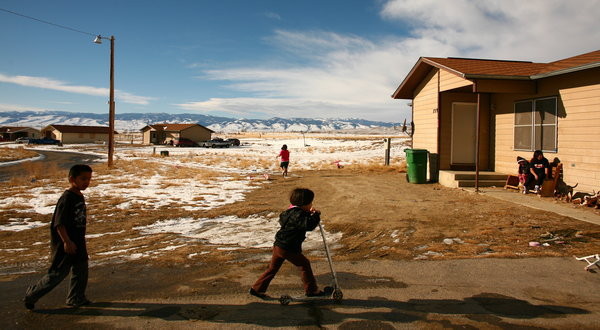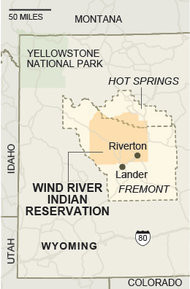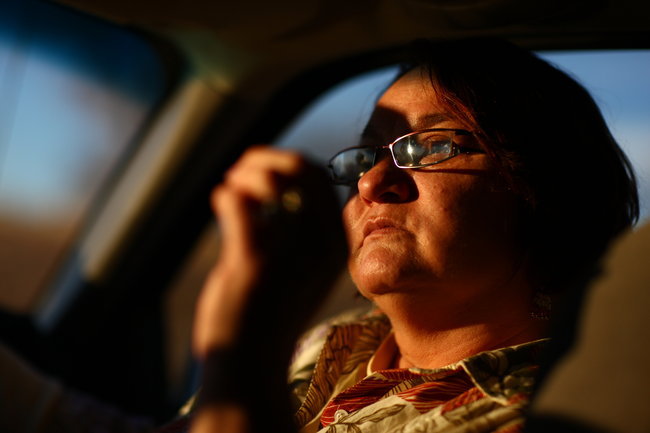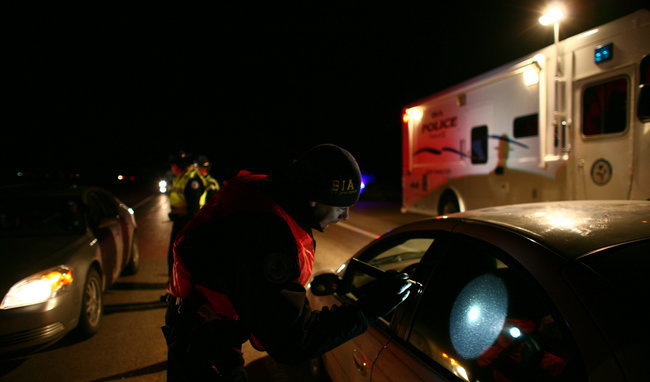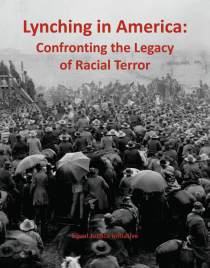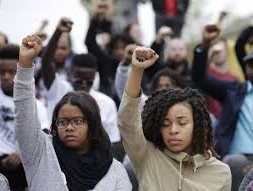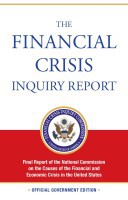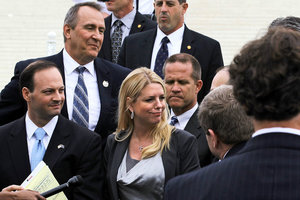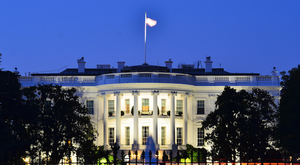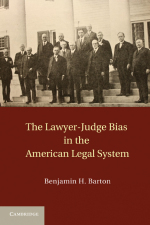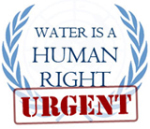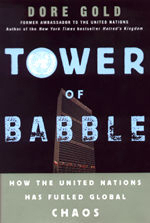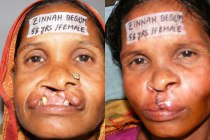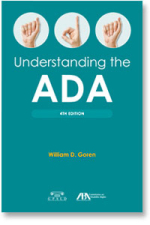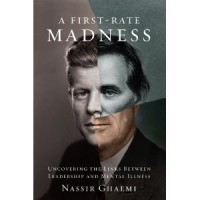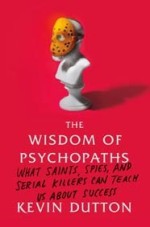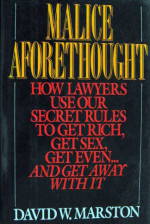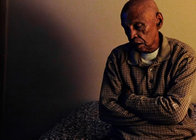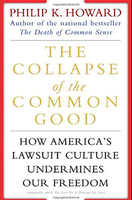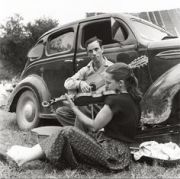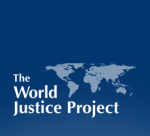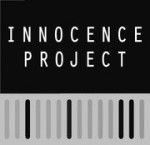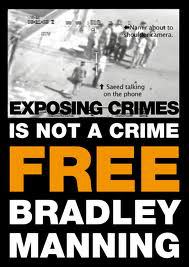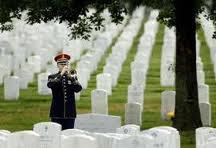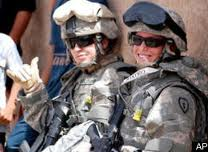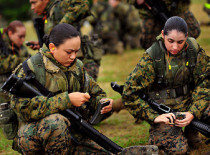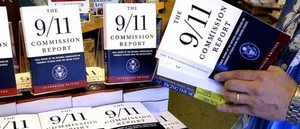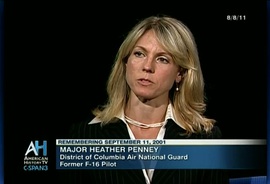.......Brutal Crimes Grip an Indian Reservation - NYT........
Brutal Crimes Grip an Indian Reservation
The New York Times
By Timothy Williams
February 2, 2012
WIND RIVER INDIAN RESERVATION, Wyo. — At a boys’ basketball game here last month, Wyoming Indian High School, a perennial state power, was trading baskets with a local
rival. The players, long-limbed and athletic, are among the area’s undisputed stars, and their games one of its few diversions. On this night, more than 2,500 cheering, stomping people came to
watch.
Outside the gym, in a glass trophy case, are photographs of players from recent championship teams. Someone peered in and, moving his finger along the line of smiling
faces, delivered a cruel counterpoint: killed in a car accident at 19 while intoxicated; murdered in his 20s; struck in the head with an ax not long after graduation.
The Obama administration, which has made reducing crime a priority in its attempt to improve the quality of life at dozens of Indian reservations plagued by violence,
recently ended a two-year crime-fighting initiative at Wind River and three other reservations deemed to be
among the country’s most dangerous.
Nicknamed "the surge," it was modeled after the military’s Iraq war strategy, circa 2007, which helped change the course of the conflict. Hundreds of officers from the
National Park Service and other federal agencies swarmed the reservations, and crime was reduced at three of the four reservations — including a 68 percent decline at Mescalero Apache in New Mexico, officials said. Wind River, as has been true for much of its turbulent history, bucked the trend: violent crime
there increased by 7 percent during the surge, according to the Department of Justice.
Despite its bucolic name, the reservation, nestled among snowcapped peaks and rivers filled with trout, is a place where brutal acts have become banal. A rambling stretch of scrub in central Wyoming the size of Rhode Island and Delaware combined, Wind River has a crime rate five to seven times the national average and a long history of ghastly homicides.
During the initiative, which increased the number of officers on the reservation to 37 from 6, crimes included the murder of a 13-year-old girl who had been missing for four days and whose partly clothed body was found under a tree, and the killing of a 25-year-old man, who the police say had been beaten with a child’s car seat and a dumbbell by two friends after a sexual encounter.
"This place has always had the gloom here," Kim Lambert, a tribal advocate on the reservation, said as she drove by a line of small houses people refer to as "murderers’ row." "There has always been the horrendous murder. There has always been the white-Indian tension. It’s always been something."
Crime may be Wind River’s most pressing problem, but it has plenty of company. Life, even by the grim standards of the typical American Indian reservation, is as bleak and punishing as that of any developing country. On average, residents can expect to live 49 years, 20 years fewer than in Iraq. Unemployment, estimated to be higher than 80 percent, is on a par with Zimbabwe’s, and is approaching the proportionate inverse of Wyoming’s 6 percent jobless rate.
The reservation’s high school dropout rate of 40 percent is more than twice the state average. Teenagers and young adults are twice as likely to kill themselves as their peers elsewhere in Wyoming. Child abuse, teenage pregnancy, sexual assault and domestic violence are endemic, and alcoholism and drug abuse are so common that residents say positive urinalysis results on drug tests are what bar many from working at the state’s booming oil fields.
On one section of the reservation, people must boil drinking water because chemicals, possibly the result of the oil and natural gas drilling method known as hydraulic fracturing, have contaminated the water supply. And fearing that the chemicals might explode in a home, the Environmental Protection Agency ordered residents to run fans and otherwise ensure ventilation while bathing or washing clothes.
The difficulties among Wind River’s population of about 14,000 have become so daunting that many believe that the reservation, shared by the Northern Arapaho and Eastern Shoshone Tribes, is haunted — the ghosts of the innocent killed in an 1864 massacre.
"Anywhere, there are good spirits and bad spirits around," said Ivan Posey, a member of the Eastern Shoshone Business Council. "But when people are struggling in their lives, those bad spirits come around more often. It’s kind of a yin and yang."
Why the other reservations were able to curb crime while Wind River was not has been a matter of grave speculation. Some blame Wind River’s geographic isolation and a general apathy on the reservation, while others point to the numerous troubled children being raised by grandparents unable to keep track of them.
During a recent Friday night patrol on the reservation, Michael Shockley, a Wind River police officer whose department lacks even the basic ability to track crimes, said he was surprised to learn that the surge had not reduced violent crime.
Even with 10 fewer officers than it had during the surge, Officer Shockley said, the Police Department responds to all calls, not just the most serious ones. Crime, he said, has appeared to ebb, especially when compared with what he referred to as the bad old days, when on a single night about a year ago, he drove a total of 400 miles, logged 42 calls and arrested 19 people.
Still, signs of disillusionment are ubiquitous: piles of empty Black Velvet whisky and vodka bottles; discarded prescription bottles for painkillers; gang graffiti; burnt-out homes.
As far as criminality, this is the pinnacle," Officer Shockley said. "You see everything here."
The Bureau of Indian Affairs, which oversees the Wind River Police Department, says the rise in violent crime was a result of people reporting offenses they might have ignored before — which suggests that the reservation’s crime rate is even higher than previously thought. In fact, the bureau says, crime has fallen since the surge ended in October, although it did not provide statistics.
Joseph Brooks III, the Wind River police chief, said that one resident, shocked that the police response had gone from hours to minutes, told him, "Chief, if I knew you were going to come immediately, I would have called you later."
One crime the surge was unable to prevent was the death of Marisa Spoonhunter, an eighth grader at Wyoming Indian Middle School who was killed in April 2010. Her parents recognized her body by the coat they had recently bought for her in Denver.
Marisa’s 21-year-old brother, Robert, and 19-year-old stepcousin were arrested and convicted. The three had been drinking in a trailer home when Robert Spoonhunter said he blacked out and awoke to find his sister and cousin having sex. An enraged Mr. Spoonhunter said he choked his sister for about 20 seconds before flinging her away. Marisa’s head hit a weight-lifting bench.
The men fastened a rope to her ankles and dragged her under a tree. Before resuming drinking, they put her clothes in a burn barrel.
At the sentencing, Vern Spoonhunter, the father of Marisa and Robert, said Marisa had been in the third generation of Spoonhunters to be murdered at Wind River — meeting the same end as his father and brother.
"Now we have two rooms in our home that are empty," he said, referring to his children. "And that’s what we have to deal with."

